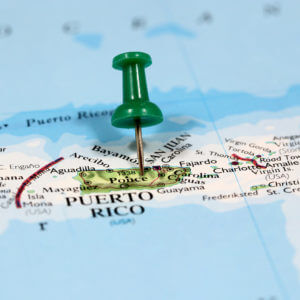Some men go to war and come back broken. Others come back and blackout that experience. Some are never whole again.
However, some leave active duty inspired to help, to change the things they can for the better. Adam Rousselle is such a man.
Rousselle saw service fighting with the Contras in Honduras and later was on active duty in Iraq, fighting in Operation Desert Storm. He left the Army with a disability, ascending from private to officer, and set out to be an entrepreneur. He aimed to do good and provide a life for himself and his young bride.
Returning to Honduras, he founded a mahogany wood exporting company. It was a smashing success until he ran afoul of the government and shady operators.
Suddenly, Rousselle was accused of harvesting mahogany trees illegally. However, he said he was scrupulous in cutting only trees identified for removal by the Honduran government.
His staff and his father were imprisoned. His father died in prison — an open-air enclosure without shelter. But Rousselle still had to get his staff released and his name cleared.
His solution: Identify and inventory the trees in the Honduran rainforest. Call in science, can-do thinking and a new satellite application.
Working with NASA images from space, Rousselle was able to put every mahogany tree into a database and identify each tree’s maturity and health through the crown’s signature. Millions of trees were identified, and Rousselle proved that the trees he was supposed to have cut illegally were alive and well in the rainforest.
Rousselle was exonerated, and his staff was freed after three and a half years in detention. With the new science of tree identification, Rousselle helped Boise Cascade Co. inventory its entire timberland holdings, and electric utilities have been able to identify and remove dead trees in high wildfire-risk areas.
Another of Rousselle’s innovations was an energy storage system, using abandoned quarries as micropump storage sites. “These are all over every country, close to the highest energy demand centers,” Rousselle said. He got many of these permitted, and others are being examined.
As I write, a quarter of Puerto Rico’s 3.22 million people are without electricity after Hurricane Ernesto swept through their island. Ernesto has left slightly less damage than Hurricane Maria in 2017. In that hurricane, more than a third of the island was plunged into darkness, and some communities were without power for nine months.
For several years, Rousselle has been working on a plan to help Puerto Rico by supplying electricity via cable from the U.S. mainland.
It is a grand engineering project that would, Rousselle said, cut the cost of electricity on the island in half and ensure a hurricane-proof supply. While it wouldn’t deal with the problem of the Puerto Rican grid’s fragility, it would solve the generation problem on the island, which is outdated and based on imported diesel and coal, both very polluting. Also, it would help solve the bulk transmission problem.
The U.S. energy establishment would like to replace that electricity generation with renewables, wind and solar. However, Rousselle pointed out that on-island wind and solar would be vulnerable to future hurricanes. Green electricity is well and good, but generated securely on the U.S. mainland is best, Rousselle said.
He said his 1,850-mile, undersea cable project would deliver 2,000 megawatts of electricity from a substation in South Carolina to a substation in Puerto Rico. That would leave the Puerto Rico electric supply system free to concentrate on upgrading the fragile island grid.
Worldwide, there is a lot of activity in undersea electricity transmission. All aim to bring renewable electricity from where there is an abundant wind and solar resource to where it is needed. The two most ambitious plans: One to link Australia and Singapore (2,610 miles) and another to link Morocco to the United Kingdom (2,360 miles). There is also a plan to hook up Greece, Cyprus and Israel via undersea cable.
The longest cable of this type (447 miles) went into operation last year, bringing Danish wind power to the United Kingdom.
One way or another, undersea electricity transmission is here, and it is the future.
After Puerto Rico, Rousselle, ever the soldier of fortune, hopes to connect the entire Caribbean Basin in an undersea grid, moving green energy out of the reach of tropical storms.

 Follow
Follow
Leave a Reply